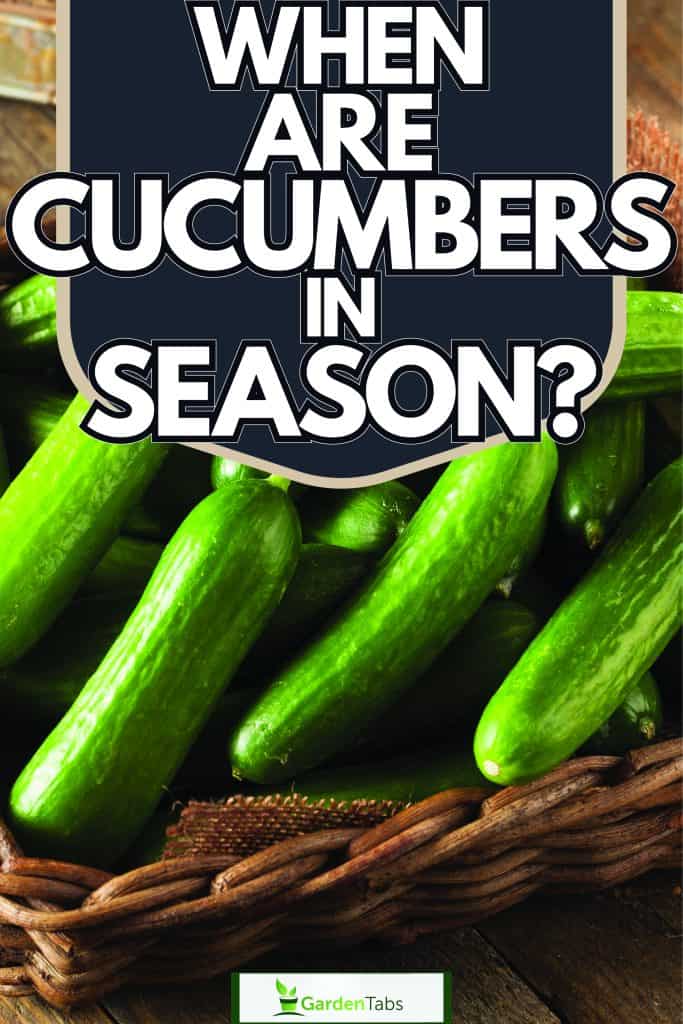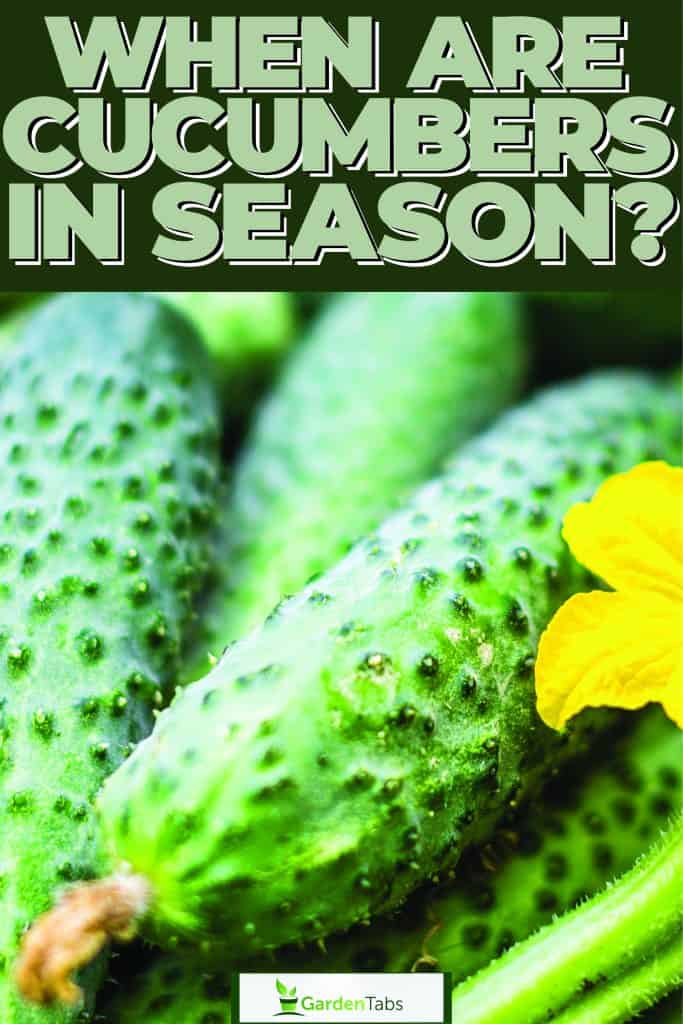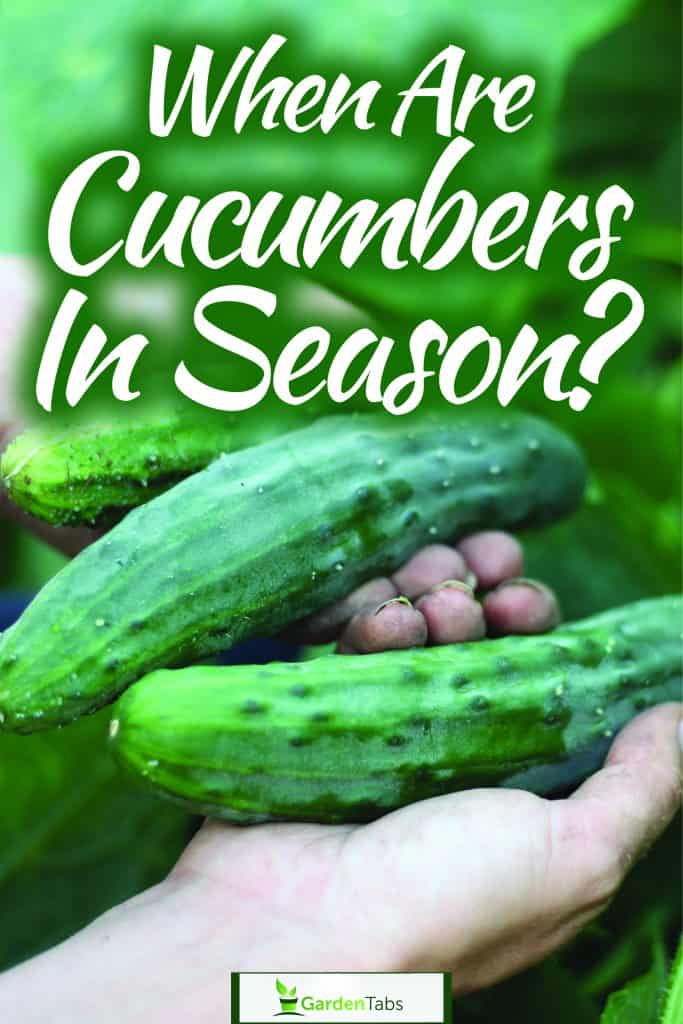Knowing when cucumbers are in season is important for gardeners and consumers alike, as it ensures optimal taste, freshness, and nutritional value.
In general, cucumber season typically runs from May to August in most states, although it varies depending on your location.
For example, it's cucumber season all year round in Arizona, while those looking to enjoy cucumbers in winter can find them in Texas and Florida.
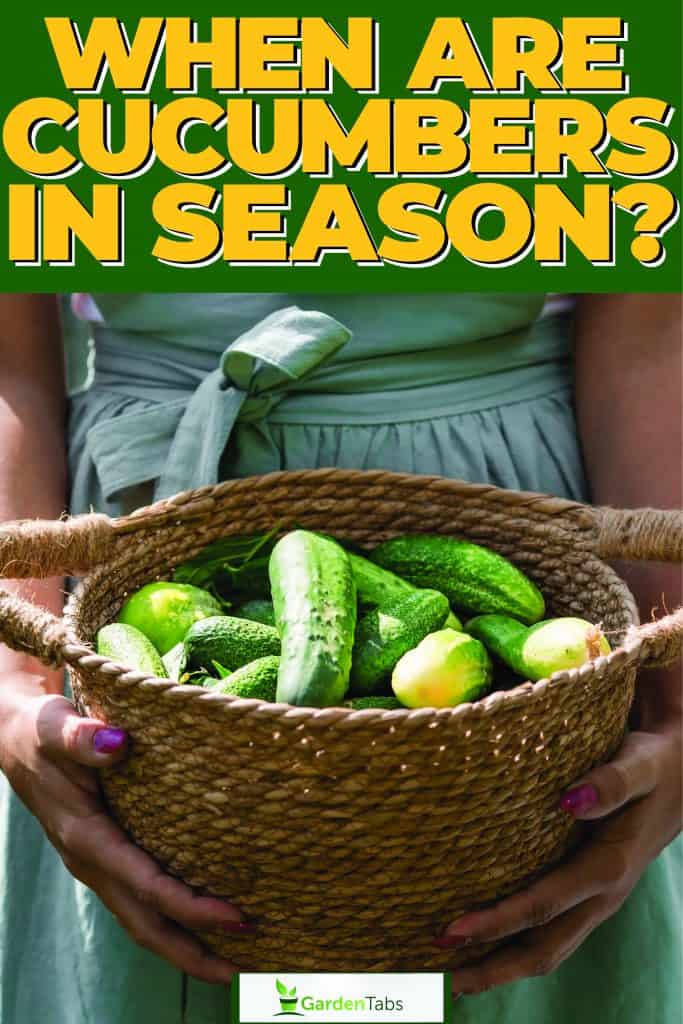
Cucumber Season Overview
In this section, you'll learn about the factors that influence cucumber season, including geographical factors and cultivar variations.
Geographical Factors
As a warm-season vegetable, cucumbers grow best at temperatures between 75 and 85°F.
They are very tender plants, so frost and cold temperatures can quickly damage or kill them. That's why it's crucial to plant them at the right time, typically after the last frost of the season.
The temperature of the soil should be at least 70ºF for optimal germination.
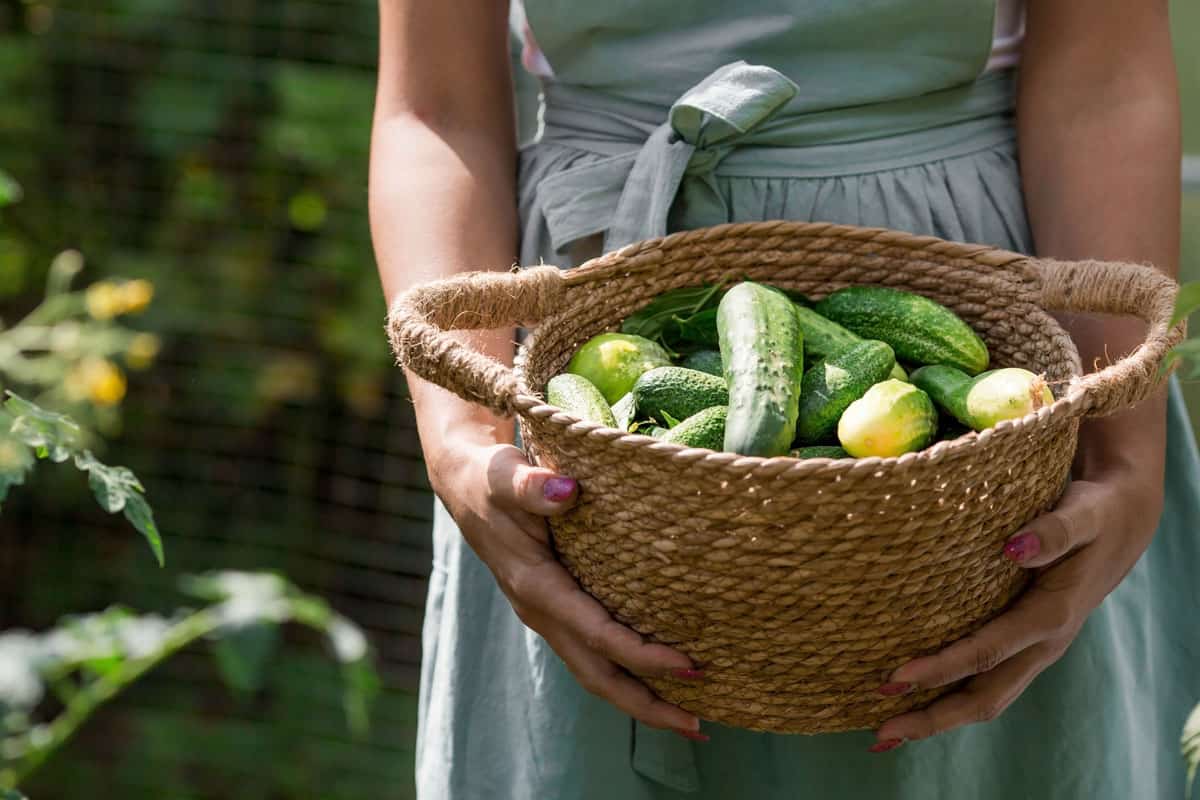
Cucumber season can vary depending on where you live. In most states, the season lasts from May to August. However, Arizona enjoys a year-round cucumber season, while Texas and Florida can offer cucumbers during winter.
Cultivar Variations
Some cucumber cultivars have different growth requirements and can affect the planting and harvesting times.
Cucumbers generally require a long growing season—between 50 and 70 days; however, individual varieties may have slightly different growth rates.
To have a successful cucumber harvest, choose the appropriate cultivar for your region and check the specific growing requirements for that particular variety.
Factors to check include ideal temperature, watering needs, and any potential issues with pests and diseases.
Also, pay attention to the ripening time as cucumbers left on the vine too long can develop a bitter flavor.
Planting Cucumbers
Cucumbers are a favorite summer garden vegetable. Let's explore the best practices for planting and growing these delicious and healthy veggie treats.
Best Time to Plant
To ensure a healthy crop, it's essential to plant cucumbers at the right time. The ideal growing conditions for cucumbers are between 60° to 90°F, with the soil temperature around 70°F.
Outdoors, cucumbers should be sown or transplanted into the ground no earlier than 2 weeks after the last frost date as they are extremely susceptible to frost and cold damage.
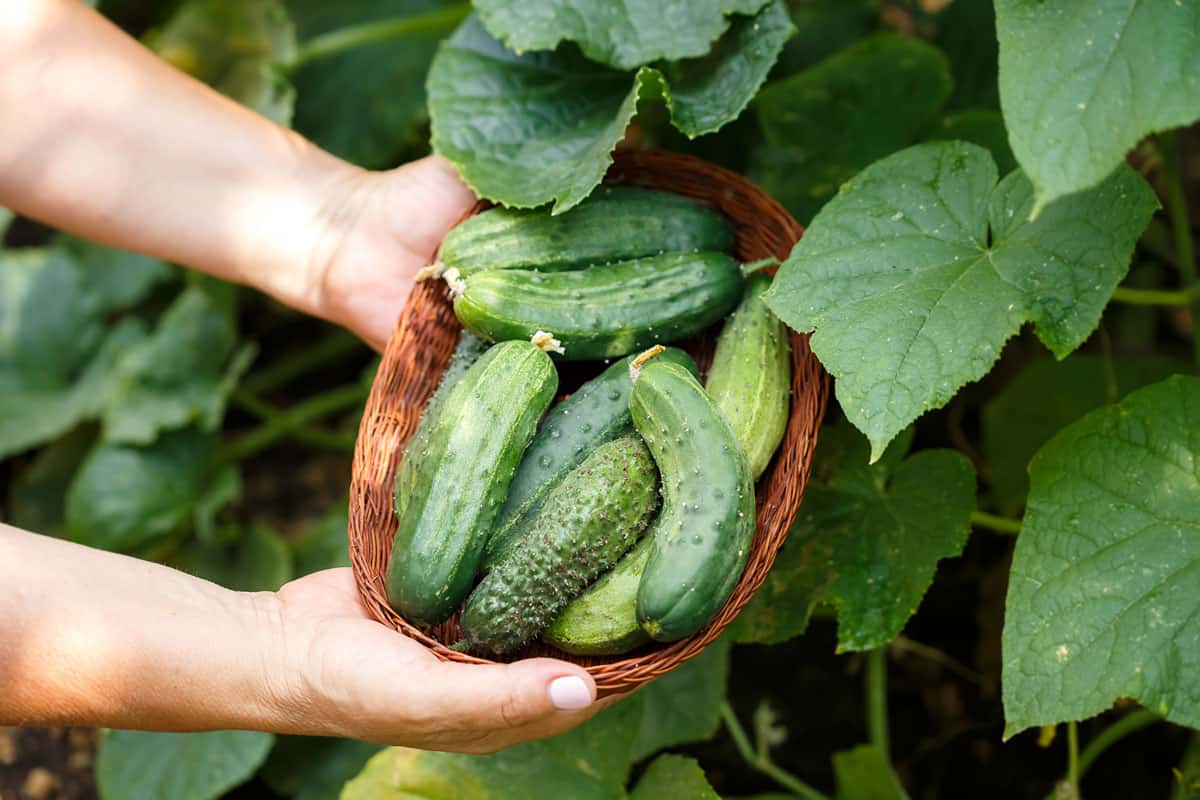
Indoor Start vs Outdoor Planting
Growing cucumbers can be approached in two ways: starting seeds indoors or sowing seeds directly outdoors.
Indoor Start
To get a head start on the growing season, you can seed cucumbers indoors 2-3 weeks before the last frost date in a high-quality potting mix.
Plant seeds ½" to 1" deep, or about twice as deep as the seed dimensions.
After germination, transplant the seedlings outdoors after the last frost date has passed and the soil temperature has reached 70°F.
Outdoor Planting
Alternatively, you can sow cucumber seeds directly outdoors when the soil temperature is consistently at least 70°F.
Make sure to plant them in a well-drained location with plenty of space, as cucumber vines need room to spread out and grow.
Remember to monitor your cucumber plants throughout their growth, ensuring proper watering, pest control, and care.
With the right attention and planting techniques, your cucumbers will thrive in your garden and provide a delicious and refreshing addition to your summer meals.
Check out this video below for more growing tips:
Harvesting Cucumbers
Growing and enjoying fresh cucumbers is a rewarding experience.
In this section, we'll discuss how to determine when your cucumbers are ready for harvest and the optimal picking time.
Signs of Maturity
Cucumbers typically require a long growing season, making it important to know the signs of maturity.
A ripe cucumber will:
- Be firm to the touch
- Have a uniform green color
- Reach the size suitable for its variety
For example, pickling cucumbers are typically ready to harvest when they are about 3-4 inches long, while slicing cucumbers should be around 6-8 inches long.
Be sure to pick your cucumbers before they become spongy or develop a bitter taste.
Read here to learn when and how to harvest cucumbers: How To Tell If Cucumbers Are Ready To Pick
Optimal Picking Time
The best time to harvest cucumbers varies depending on the variety, but most are ready between 50-70 days after germination.
To ensure a constant supply of fresh cucumbers, consider making successive plantings every two weeks throughout the growing season.
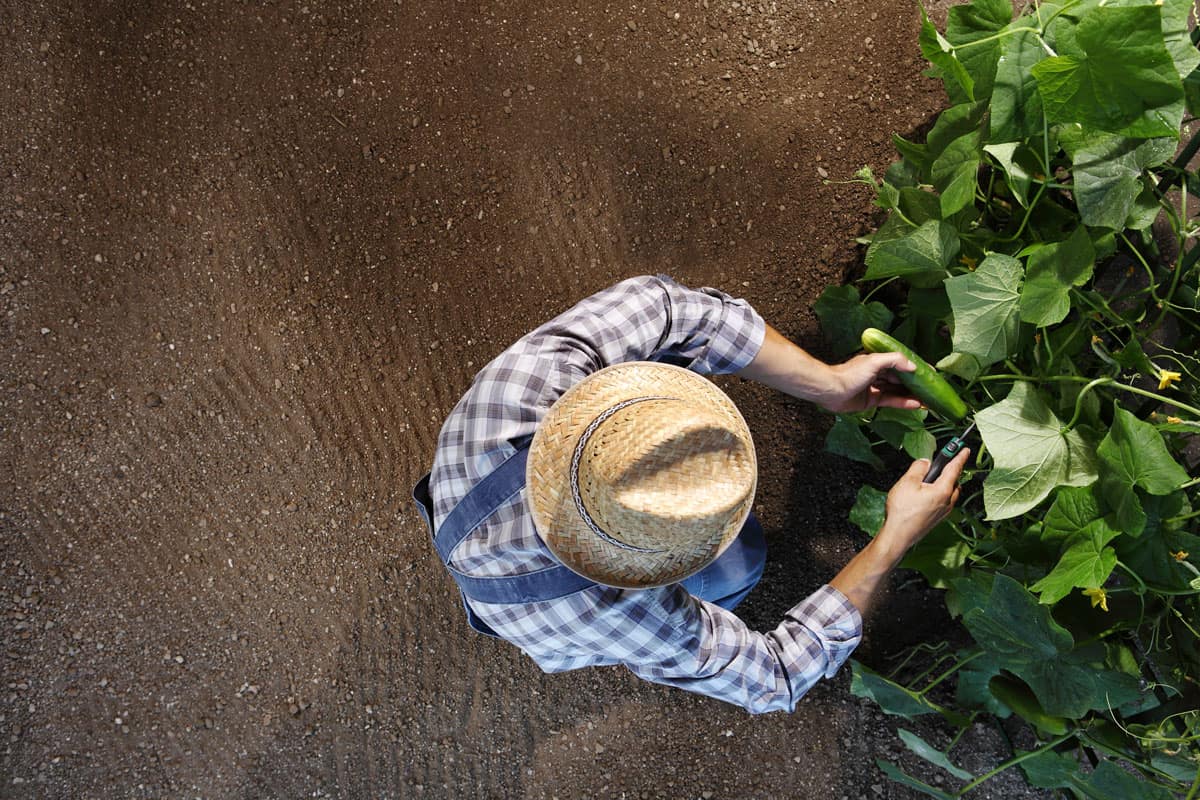
When picking cucumbers, it's best to do so during the early morning hours when it's cool. This helps to preserve the freshness and crispness of your cucumbers.
Remember, timely harvesting is essential for enjoying the sweet, fresh flavor of your cucumbers.
Storing Cucumbers
Cucumbers are a delicious and versatile vegetable, and knowing how to store them properly can help extend their freshness.
Short-Term Storage
For short-term storage, it's essential to keep cucumbers dry, as moisture can lead to spoilage.
When you bring your cucumbers home, wash them with cold water and dry them thoroughly.
Wrap each cucumber in a paper towel to soak up any excess moisture and prevent them from getting slimy.
Next, store the wrapped cucumbers in a zip-top bag or a reusable produce bag in the refrigerator. This keeps enough moisture in the bag to prevent the cucumbers from drying out.
Using these methods, your cucumbers can stay fresh for about two weeks.
Long-Term Preservation Methods
If you find yourself with an abundance of cucumbers and want to preserve them for an extended period, consider these long-term preservation techniques:
Pickling
Cucumbers can be easily pickled, which allows them to be stored for months in airtight jars.
You can use different recipes for various flavors, ranging from dill pickles to sweet bread and butter pickles.
Freezing
Though cucumbers may lose their crisp texture when frozen, they can still be used in cold dishes such as smoothies and gazpacho.
To freeze cucumbers, slice them and lay the slices on a parchment paper-lined tray.
Freeze until solid and then transfer the slices to a zip-top bag or container for long-term storage.
Dehydrating
Dehydrating cucumbers results in a tasty snack or an addition to soups and stews.
To dehydrate, slice the cucumbers thinly and place them on trays in a dehydrator, following the manufacturer's guidelines for temperature and timing.
Remember, these long-term preservation methods may alter the texture and taste of your cucumbers, but they're an excellent way to ensure you can enjoy their flavor well beyond the peak growing season.
Growing Cucumbers Year-Round
Cucumbers are a popular and tasty vegetable, but how do you grow them year-round? We got some answers below.
Indoor Gardening
If you want to enjoy fresh cucumbers all year, you can try your hand at indoor gardening.
You'll need to choose a variety of cucumber that's suited for indoor conditions.
For example, consider growing compact varieties that don't need as much space to spread their vines.
When growing cucumbers indoors, make sure to provide adequate light, either by placing them near a south-facing window or by using artificial grow lights.
Maintain a consistent temperature between 75 and 85°F for optimal growth.
Remember to water your plants regularly and provide proper drainage to avoid waterlogged roots.
Fertilize your cucumber plants every two weeks and monitor for any signs of pests or diseases.
Greenhouse Growing
Another option to grow cucumbers year-round is by using a greenhouse. Greenhouses provide a controlled environment that can sustain cucumber plants even during colder months.
To start, choose cucumber varieties that can thrive in fluctuating temperatures and are resistant to diseases.
In your greenhouse, maintain a temperature between 70 and 85°F during the day, and slightly cooler at night.
Provide adequate humidity levels to encourage fruit production.
Supply your plants with ample sunlight, either through greenhouse panels or supplemental lighting if needed.

Giving your cucumber plants proper support, such as trellises or stakes, helps keep them off the ground, reducing the risk of diseases and making it easier to harvest the fruit.
Keep an eye out for pests and diseases, and address any issues promptly to ensure a healthy, productive cucumber crop.
Following these steps for indoor gardening and greenhouse growing, you'll be well on your way to enjoying fresh and delicious cucumbers all year long.
Enjoy Cucumbers All Year Round
Now that you know when cucumbers are in season, you can plan your garden accordingly and enjoy this refreshing, low-calorie vegetable at its prime.
The next time you're browsing the produce aisle, look for cucumbers during their peak season to treat yourself to their crisp, delicious taste, and multiple health benefits.
Happy gardening!
For more cucumber fast facts, check out these helpful articles below:

